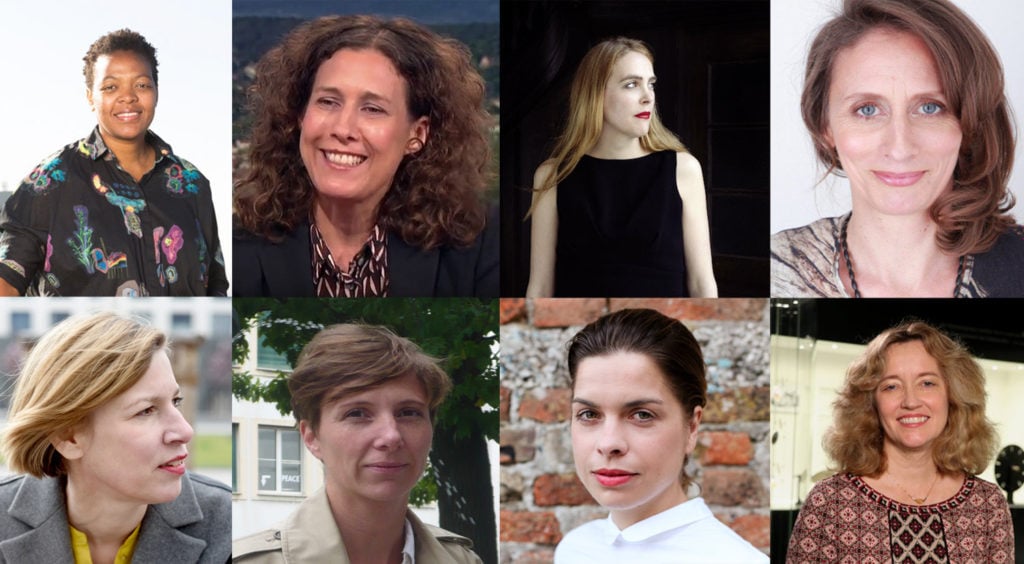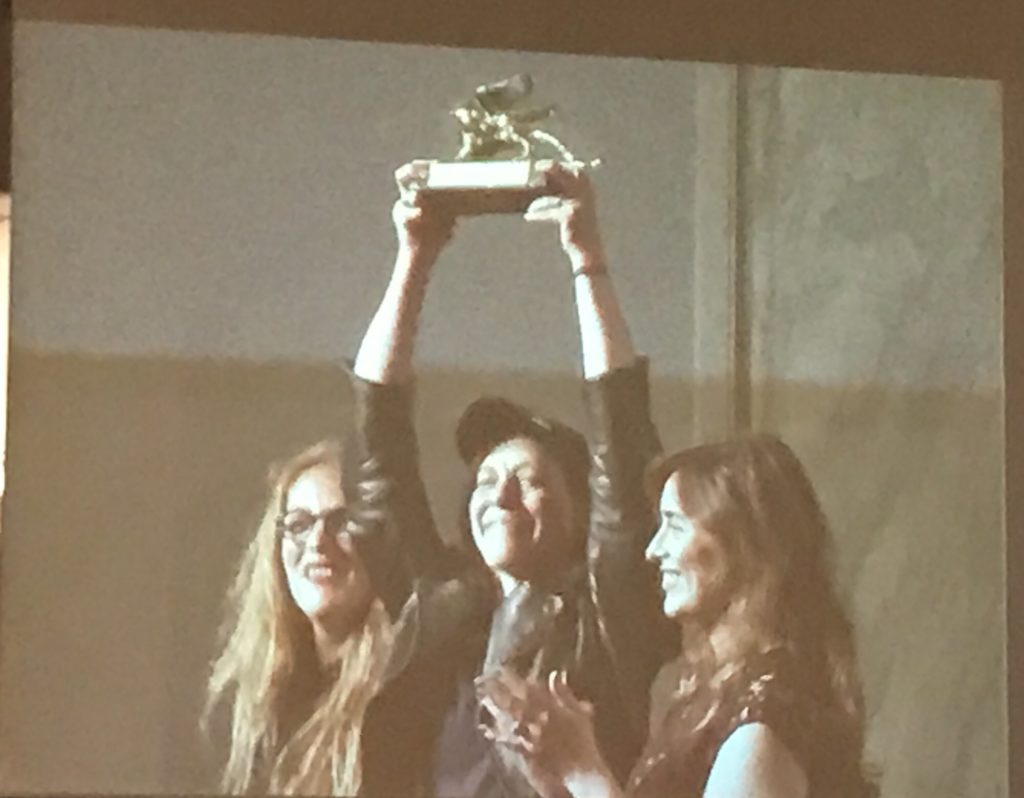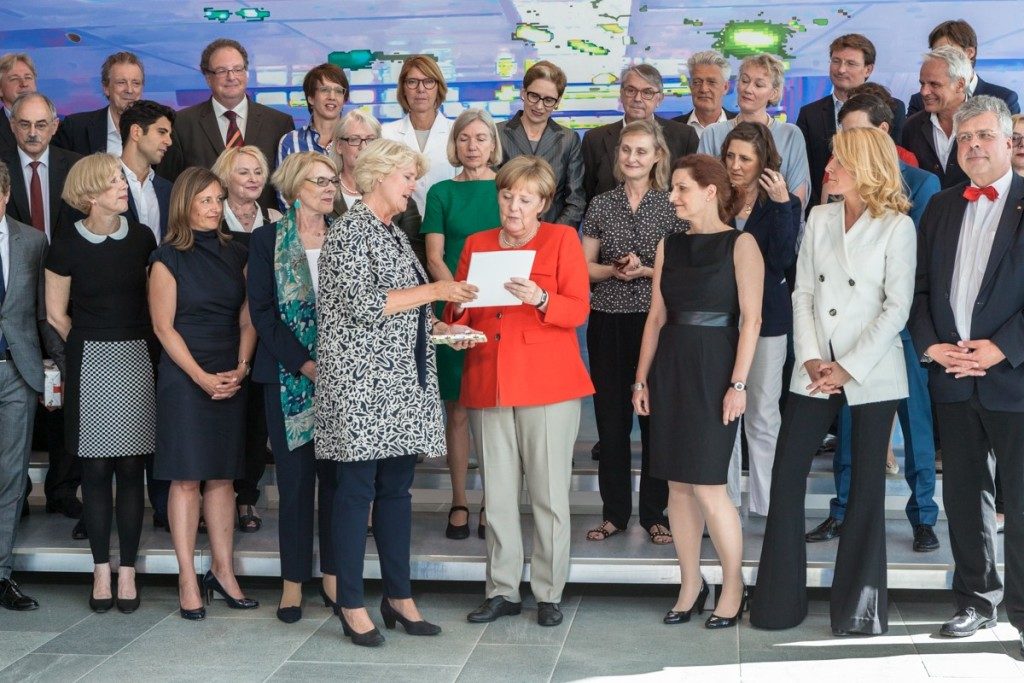Art World
8 Women Become Leaders of Top Institutions in Germany This Year, Yet Significant Gender Inequality Remains
Despite increasing presence in key positions, facts point to a powerful glass ceiling for women in the arts in Germany.

Despite increasing presence in key positions, facts point to a powerful glass ceiling for women in the arts in Germany.

Kate Brown

Looking at the year ahead in the German art world, the future is certainly female. With a directorial shuffle underway, women are moving into several top positions at institutions across the country. And yet, despite such visibility, the presence of women in decision-making positions in culture and media in Germany overall is still significantly trailing behind its European neighbors, as is their relative pay, according to a study presented last fall.
The observable uptick is likely due to factors other than corrective measures, and each of these incoming female curators, scholars, and art historians are definitive experts in their respective fields.
The most recent appointment, announced today, sees Christina Lehnert—the former curator of Kunstverein Braunschweig—taking over as the new head curator at the Portikus in Frankfurt, succeeding Fabian Schöneich, who’s at the end of his tenure. The news comes on the heels of last year’s string of directorial announcements: Of the 10 institutional positions becoming available in Germany in 2018, eight are being filled by women.
Also in Frankfurt, Susanne Pfeffer, the Golden Lion-winning curator of Germany’s pavilion at the 2017 Venice Biennial and former director of the Fridericianum in Kassel, is stepping into her new role as director of the Museum of Modern Art (MMK) this month. Meanwhile, Ellen M. Harrington succeeded Claudia Dillmann on January 1 at the city’s Deutsches Film Museum; the American academic was previously the head of Collections at the Academy of Motion Pictures in Los Angeles.

Curator Susanne Pfeffer (left) with Anne Imhof (center) receiving the Golden Lion at the Venice Biennale
Further south, at the Kunsthalle in Tübingen, Nicole Fritz—previously director of the Ravensburg Museum of Art—replaced Holger Kube Ventura this month, who terminated his contract after only a year due to conflicts with the museum’s board. In Cologne, art historian Nikola Dietrich will take the helm as director of Kölnischer Kunstverein beginning July 1, replacing Moritz Wesseler who had held the position since 2013. Then there is Janneke de Vries, current director of the GAK-Gesellschaft für Aktuelle Kunst in Bremen, who will take over at the Weserburg museum as of October 1. She succeeds Peter Friese, who will retire.
In Berlin, the Martin-Gropius-Bau is bringing in art historian Stephanie Rosenthal from London’s Hayward Gallery. She will take over as the museum’s director on February 1 from the exiting director Gereon Sievernich, who had held the post for 16 years. And the South African curator Gabi Ngcobo is curating the Berlin Biennale that is set to open this June.
And yet, appearances can be deceiving. A recent comprehensive survey from the Hertie School of Governance finds an improving but dire situation, as a gender bias against women remains persistent throughout the arts, culture, and media industries in Europe and Germany.
The 2017 study “Gender Equality Policy in the Arts, Culture and Media: Comparative Perspectives”, supported by the German government’s commissioner for culture and media and under the academic direction of Helmut K. Anheier, compared a 2016 study of the German cultural field with five of its European Union members: France, Italy, Sweden, Poland, and the UK. Researchers found that, while women participate almost equally in the cultural sector in Germany (48 percent, an above-average percentage as compared to the other EU countries), the pay gap in Germany remains the widest by a long shot, figuring at a staggering 29.8 percent, compared to the 19.4 percent average for the others.
In fact, gender inequity in terms of payment has even grown worse in the country, as the pay gap actually widened between 2008 and 2014. The study also revealed how just 22 percent of operational managers in Germany’s large media organizations are women, well below the EU average of 33 percent female executives. Women in Germany across all industries also figure quite badly when it comes to pensions, and they continue to suffer the highest pay gap of all post-retirement: 46 percent in Germany, as compared to the EU average of 38 percent.
If there was any doubt as to what exactly comprises a glass ceiling, at least in the academic field, Hertie’s 2016 report on Germany makes it clear: “The more prestigious and, above all, the more endowed an academic position is in the cultural and media sector, the higher the tendency that it is held by a man.” In other words, the higher female students advance in their qualifications, the fewer opportunities become available to them. Translated into figures, although women actually comprise 39 percent of the faculties of art colleges, they only represent 20 percent of their presidents.
Paralleled with a joint study released in late 2017 by artnet’s Dr. Fabian Bocart as well as Marina Gertsberg and Rachel A.J. Pownall, such findings confirm that female artists share a similar trajectory. The 2016 study of the German art field seems to agree with the American report, as they conclude that, though 50 percent of art students are women, less than 20 percent of them are on view in galleries. In sum, in 2018 we are looking at a western art market that may indeed be chipping away at gender inequity, but it is still dramatically tilted in favor of men. And Germany is no exception.

Together with cultural workers, the Minister of State for Culture, Monika Grütters, and Chancellor Angela Merkel presented the package of planned concrete measures at a roundtable last June. Photo: Bundesregierung/Münch.
It’s also worth noting that at several of Germany’s most prestigious art institutions, a female director has yet to take the reins. The National Gallery, whose director presides over five state museums in Berlin including the Neue Nationalgalerie and Hamburger Bahnhof, has only had male leaders in over 100 years. (It’s perhaps no coincidence that the institution chose to highlight the fact that the four finalists of its distinguished prize for young artists, the Preis der Nationalgalerie, were all female in 2017; conducted in such an overtly stated manner, it led the finalists to publicly denounce the prize’s “constant emphasis, in press releases and public speeches, on our gender,” among other grievances.)
In addition to the National Gallery, the Museum Ludwig in Cologne, the Haus der Kunst in Munich, and Frankfurt’s Schirn Kunsthalle, for example, have yet to appoint female directors throughout their respective histories.
Last August, in reaction to the 2016 study and a subsequent round-table on the issue, German culture minister Monika Grütters established a new office focused on gender inequity within the German Cultural Council. The office is setting up a database listing artists and female leaders of cultural institutions and will work to establish gender-balanced panels and juries, as well as scholarships and mentorship programs.